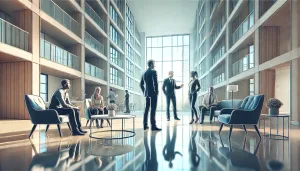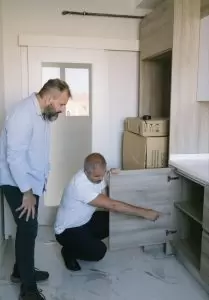As a landlord in Ontario, understanding the difference between normal wear and tear and actual damage is crucial for managing your rental property and avoiding disputes with tenants. The Residential Tenancies Act (RTA) does not define these terms, but the Landlord and Tenant Board (LTB) has established a common-sense approach based on court rulings and past cases. Essentially, normal wear and tear refers to the natural and gradual deterioration of a property over time from ordinary use. Damage, on the other hand, is caused by a tenant’s intentional, careless, or negligent actions.
What is Considered Normal Wear and Tear?
Normal wear and tear is the expected result of a tenant living in a property. It’s the cost of doing business and cannot be charged back to the tenant’s security deposit. Think of it as the inevitable aging process of your unit.
| Normal Wear and Tear | Vs. | Tenant Damage |
|---|---|---|
| Faded paint or small scuffs and marks on walls from furniture. | Large holes in drywall, extensive crayon marks, or unapproved paint colour changes that require a full repaint. | |
| Worn carpet in high-traffic areas like hallways or near entrances. | Tears, burns, or significant stains on the carpet from spills or misuse. | |
| Slightly warped baseboards or peeling paint on window sills due to age and moisture. | Broken baseboards or smashed window frames caused by impact. | |
| Faded or scratched hardwood floors from foot traffic over years. | Deep gouges, water damage, or burn marks on the floor from neglect or carelessness. | |
| Small nail holes from hanging pictures or light wall décor. | Multiple large holes in the wall or damage from adhesive strips that pulled off paint and drywall. | |
| Minor rust on bathroom fixtures or a dull kitchen faucet finish over time. | Broken toilet seats or cracked sink basins. | |
| Loose doorknobs or cabinet handles from regular use. | Missing doorknobs or handles that have been ripped off or broken. | |
| Faded curtains or blinds from sun exposure. | Torn or ripped blinds caused by carelessness or pets. | |
| Dented kitchen counters from daily use or minor scratches on an older appliance. | Cracked or chipped countertops, or broken appliance doors and handles. | |
| Worn grout in bathroom tiles or minor mildew in shower corners. | Missing or cracked tiles, or significant mold growth from a lack of cleaning and ventilation. | |
| A few scratches on a stovetop from pots and pans. | A cracked glass stovetop from a dropped pot. | |
| Minor dust or dirt accumulation in hard-to-reach places. | A unit that has not been cleaned at all, with garbage left behind, requiring a full cleaning crew. | |
| A leaky faucet that developed over time. | Damage to the floor or cabinet caused by a tenant failing to report the leaky faucet in a timely manner. |
The key distinction is the cause. If the condition of the item is a result of it simply being used over time, it’s wear and tear. If it’s the result of a specific event or action, it’s likely damage.
Tips for Avoiding Disputes and Maintaining Your Unit
1. Conduct a Thorough Move-in and Move-out Inspection
This is the most critical step. Create a detailed move-in inspection report with your tenant before they get the keys. Go room by room and note the condition of everything—walls, floors, fixtures, appliances, and even blinds. Take photos or a video to document the unit’s condition. Have the tenant sign and date the report. When they move out, use the same report to compare the unit’s current state to its original condition. This provides clear, undeniable evidence if a dispute arises.
2. Set Clear Expectations
Communicate your expectations from the start. Your lease agreement should specify what is and is not allowed, such as painting the walls, mounting televisions, or making other alterations. A well-written lease can help prevent problems before they start.
3. Respond to Maintenance Requests Promptly
Failing to address a maintenance issue can turn a minor problem into major damage. For example, a slow leak under a sink, if ignored, can cause significant water damage to the floor and cabinets. By responding quickly to tenant requests, you protect your property and demonstrate that you are a responsible landlord.
4. Invest in Durable Materials
Using high-quality, durable materials can extend the life of your rental unit and minimize the effects of normal wear and tear. For example, opting for a tougher, washable paint or a durable vinyl plank flooring can withstand more use than cheaper alternatives.
By understanding the meaning of normal wear and tear and adopting these best practices, you can protect your investment and build a positive, long-lasting relationship with your tenants.




